Koide Hiroaki (66) has emerged as an influential voice and a central figure in the anti-nuclear movement since the nuclear meltdown at Fukushima Daiichi of March 11, 2011. He spent his entire career as a nuclear engineer working towards the abolition of nuclear power plants. His powerful critique of the “nuclear village” and active involvement in anti-nuclear movements “earned him an honorable form of purgatory as a permanent assistant professor at Kyoto University.”1 Koide retired from Kyoto University in the spring of 2015, but continues to write and act as an important voice of conscience for many who share his vision of the future free from nuclear energy and weapons. He has authored 20 books on the subject. Professor Kasai Hirotaka and I visited his office at Kyoto University’s Research Reactor Institute in Kumatori, Osaka, on December 26th, 2014 for this interview. We believe that the contents of the interview, which offer new information about the degree of radioactive contamination and invaluable insight into Koide’s ethical and political stance as a scientist, remain crucial for our critical reflection on ecological destruction, the violation of human rights, and individual responsibility. Professor Robert Stolz, the translator of this interview and the author of Bad Water (Duke University Press, 2015), provides a historical perspective on the interview in a separate article. KH

Interview
I The Fukushima Disaster and Government and Corporate Response
Hirano: How does the Fukushima accident compare with the bombing of Hiroshima or Chernobyl in its scale? What are the possible effects of this yet unknown exposure?
Koide: Let’s start with the scale of the accident: It was a core meltdown involving the release of various kinds of radioactive material. Radioactive noble gas isotopes were also released, as were iodine, cesium, strontium, and other radioactive material. The noble gas isotopes have a short half-life and so at this stage they are all gone. Iodine, too, is gone. So now four years since the accident the materials that are still a problem are cesium-137, strontium-90, and tritium; really, it’s these three.2
Now, as for the scale of the accident, I think it would be best to compare these three radionuclides. Today the main contamination of Japanese soil is the radionuclide cesium-137 [Cs-137 or 137Cs]. The ocean is largely contaminated with strontium-90 [Sr-90 or 90Sr] and tritium [T or 3H]. Right now the main culprit adding to the exposure of the people in Japan is Cs-137, so I think it’s best to use Cs-137 as a standard for measuring the scale of the accident.
But we simply don’t know with any precision how much Cs-137 was released. That’s because all the measuring equipment was destroyed at the time of the accident. How much Cs-137 was released into the air? How much was spilled in the sea? We just don’t know.
Still, the Japanese government has reported estimates to the IAEA [International Atomic Energy Agency]. According to those estimated levels, reactors 1, 2, and 3 had been in operation on March 11, 2011, and all three suffered meltdowns. Those three reactors released 1.5×1016 Becquerels of Cs-137, which would make it a release of 168 times more radioactive material than the Hiroshima bombing. And this is only material released into the atmosphere-at least according to Japanese government estimates.
But I myself think the government’s numbers are an underestimate. Various experts and institutes from around the world have offered several of their own estimates. There are those that are lower than the Japanese government’s numbers and those that are higher, some two or three times higher than the government’s numbers. According to these other estimates I think that the release of Cs-137 into the atmosphere could be around 500 times the Hiroshima bombing.
Now for what has been washed into the sea. That number is likely not much different from the levels released into the atmosphere. Even today we are unable to prevent this release. And so if we combine the amount of Cs-137 released in the air and the ocean together, we get an estimate several hundred times the Hiroshima levels. And some estimates suggest the Fukushima accident could be as much as one-thousand Hiroshimas.
Now to compare this with other accidents: The amount released into the atmosphere from the explosion during the accident at the Chernobyl nuclear plant was 800 to 1000 times the Hiroshima levels. Put simply, these estimates place Fukushima on par with Chernobyl.
Worse than any of these, however, is atmospheric testing. From the 1950s to the 1960s atmospheric testing of nuclear weapons had already released Cs-137 into the air more than sixty times the numbers released even by the Japanese government for Fukushima. Of course Fukushima is an incredible tragedy, but considered from the earth as a whole it is a rather small accident.

Hirano: I want to ask in more detail about the effect of Cs-137 on the human body and the environment.
Koide: Cesium is an alkaline metal. From the human body’s perspective, cesium closely resembles potassium. The body contains enormous amounts of potassium. It is essential for humans. It’s everywhere in our bodies. Especially our flesh and muscles are full of potassium. And because of this, when cesium is released into the environment, the body deals with cesium as it does with the alkaline metal potassium, which is to say that it is taken into the body and accumulates there.
Strontium is an earth metal. The body treats it like calcium. As you know calcium is a human body building block that accumulates in our bones. Strontium, too, is taken into and collects in the bones. Just as cesium is taken in and is transported to the flesh and muscle.
Hirano: Comparing the releases from nuclear tests by the US and the USSR during the Cold War period, you said that the Fukushima accident was small. So in what way should we think about Fukushima: is it best to consider it a Japanese problem, or to consider it from a global perspective?
Koide: The amount of products of nuclear fission released during atmospheric testing was enormous, and these particles continue to expose humans to radiation. I’m a bit older than you and I recall in my childhood being told not to let the rain fall on me at the time of the testing. In this way everyone on earth has been exposed (hibaku/被曝). And because of this testing, historically speaking, cancer rates have slowly risen; I believe this increase in cancer is due to the exposure suffered during the atmospheric testing. Now the radioactive material released from Fukushima has been dispersed across the globe and so once again everyone on earth has been exposed to additional radiation. I think we can expect cancer rates to rise once again.
Atmospheric nuclear testing released all of the radioactive material in the explosions, which entered the stratosphere. Between the stratosphere and the troposphere there is the tropopause, and every year come spring all that material dispersed in the stratosphere breaks through the tropopause and falls to earth. So that material, though initially dispersed in the stratosphere, eventually falls to earth evenly, everywhere. Actually, it might not be accurate to say that it falls evenly on the earth. The majority of the testing was done in the temperate regions of the northern hemisphere, such as Nevada and the Semipalatinsk test site [in Kazakhstan], so that the northern hemisphere-as the site of most of the testing-is heavily contaminated, and within that the temperate region is heavily contaminated. Still, I can say the atmospheric testing overall has caused global contamination.
My focus now is to figure out how to deal with the acute and heavy contamination from Fukushima. I know something needs to be done right there in that specific place. That contamination will disperse and be diffused across the globe. Once dispersed, the amount of radioactive material from Fukushima will be small when compared with the atmospheric testing. Which is not to say it is not harmful. An increase in cancer will be the result. I mention that for humanity as a whole; the atmospheric tests were worse.
Now, strontium-90 [Sr-90] has been leaking from Fukushima into the ocean, so it will eventually reach the United States, especially the west coast. This much we are sure of. But to answer your question, the amount of dispersed cesium and strontium released by the atmospheric tests is tens of times greater than the Fukushima levels. Because the west coast of the US is already contaminated from the atmospheric testing, though the dispersed contamination from Fukushima will reach US shores, for people living on the US west coast, the Fukushima accident―and this is perhaps awful to say―contamination from Fukushima is hardly worth considering. Historically a much greater event has already taken place.
Hirano: To put that another way, the current Fukushima accident gives us a chance to reconsider the enormity of the past contamination from US and Soviet atmospheric tests, which has not been openly discussed.
Koide: Yes, that’s exactly right. In fact, it is the masses of people who need to realize the impact of the contamination on them. In the case of the Fukushima disaster, for example, they need to be aware that some radioactive material is reaching the North American coast, and the prevailing westerly winds will carry anything released into the atmosphere to the US. Those earlier numbers from the Japanese government indicate that the levels for Cs-137 in the atmosphere are 168 times those of the Hiroshima bombing. I’ve been told that level is 1.5 x 1016 Becquerels [Bq]. These exponents can be a pain to process, so if we think of it in peta-units-which is 1015-we get essentially 15 petabecquerels [PBq].
That said, while we are not really sure this is the number, we do know that a portion of this material will ride the prevailing winds across the Pacific Ocean. On the other hand, closer to the ground, the winds will be east, south, and north, and therefore this other portion will fall on Japan―and we can investigate the actual levels here: how much fell on this town, on this prefecture? Adding these up, it seems to be only 2.4 PBq. Which is to say of the total fifteen PBq, 2.4, or roughly only 16%, fell on Japanese soil. If the totals are higher, still a smaller share of the total contamination will have fallen on Japan compared with the Pacific, with the largest portion falling on the west coast of the United States.
So why don’t we hear complaints from the US? Why are there no calls for compensation? Whenever someone asks me this, I simply say that there just aren’t any such complaints. Why is this so? Well the levels released by the US during the atmospheric testing were tens of times greater than Fukushima. They are the criminals, so they cannot ask for compensation from Japan. The U.S. government does not want to have to reflect on its own past, and I think they are eager to completely avoid bringing up anything like that conversation. That is why I believe it is so important that those who have been exposed to radioactive contamination realize what atmospheric testing has done to them.
Kasai: I’d like to get back to the moment of the accident in some detail. On March 11, 2011 we had the East Japan Disaster (meaning the earthquake and tsunami off Tohoku). You’ve already talked about the string of accidents at the nuclear plant. At the moment the accident was taking place, you were following the response by the Japanese government and the Tokyo Electric Power Company (TEPCO) in real time. What did you see in those initial moments?
 Koide: It was truly a disastrous response. On the 11th I was in the laboratory in Kyoto as March was my month to work in the radiation-controlled area.3 It was normal workday hours and various tasks kept me busy working within the controlled area. Of course there is no TV or anything like that in the work space. That night there was a meeting so I came out to attend and that’s when I saw the images of the Sendai airport being swept away by the tsunami. The report said that there had been a devastating earthquake and tsunami. Then I wondered about the safety of the nuclear plants.
Koide: It was truly a disastrous response. On the 11th I was in the laboratory in Kyoto as March was my month to work in the radiation-controlled area.3 It was normal workday hours and various tasks kept me busy working within the controlled area. Of course there is no TV or anything like that in the work space. That night there was a meeting so I came out to attend and that’s when I saw the images of the Sendai airport being swept away by the tsunami. The report said that there had been a devastating earthquake and tsunami. Then I wondered about the safety of the nuclear plants.
Right then, there really was no more information. We had scheduled a nuclear safety issues seminar for the 18th. I’ve participated in hundreds of these seminars. Participants from the Ukraine had just arrived on the 11th. We promised to go out drinking after they arrived and so that night I went out. There was no more TV, and while there was a vague unease among us, that’s how we spent the time.
The next day I learned that all power at Fukushima had been lost and I knew things were not going to be simple. Then at noon on the 12th the roof of reactor one was blown off; at that point any expert must have known there had been a reactor meltdown. So I was certain of a core meltdown and because once it has gone this far, there is no going back, it was time to call for anyone who could evacuate to do so. I thought we were at that stage on the 12th.
Yet neither the government nor TEPCO said a single word about a core meltdown; they announced that the incident merited a 3 or 4 on the International Nuclear Event Scale. I remember thinking “You’ve got to be kidding! There’s already been a meltdown. This is at least a level 6 or 7.” But neither the government nor TEPCO gave any indication of this and there was no word of it in the media either.
One by one there were explosions at reactors 3, 4, and 2. As an expert in nuclear power, I understood there was absolutely nothing that could be done. I thought people needed to be evacuating, but still the Japanese government didn’t make the call. Government officials had set up at an off-site center near a power plant in Fukushima―at first they announced evacuation inside two kilometers, then that expanded to three, five, ten, and finally twenty km. After that nothing was done. The offsite center was supposed to coordinate the emergency response in the event of an accident, but it turned out that every one of the officials fled. They left the employees behind and fled. The Japanese government’s response was indescribably cruel.
Kasai: It seems the very words “meltdown” (メルトダウン) and “core meltdown” (roshin yōyū/炉心熔融) were strictly forbidden.
Koide: Exactly.
Kasai: I was in Japan watching on TV. What shocked me was all the nuclear power experts explaining the incident in the studio. I suppose it was a satellite relay, but when reactor number three exploded on our screens they were giving their analyses of the explosion in real time. There were experts on TV saying that the reactor had a blast valve that was used successfully. Even hearing that, an average viewer might think something was amiss. But having physicists, experts on radiation, on TV saying these things, well, even the average viewer wouldn’t buy that explanation. In a broad sense, nuclear experts like yourself played several roles in the media and government.
Koide: Yes, that’s clearly true for pronuclear experts. They all tended to tell a story that underestimated the accident. Immediately after the accident public announcements and information were restricted. As a result individual opinions or statements were strictly forbidden and nearly all experts remained silent, so even basic information was not broadcast. Though I’d made statements from the nuclear lab beginning on the 12th, it is likely there were instructions from the Ministry of Science and Education to silence me. The head of the lab convened several meetings where he told each of us not to make any statement, that the lab would toe the official line when dealing with the mass media. I thought this was wrong and said that anyone who was asked a question by the media should answer it, further saying that if I were asked a question, I had a responsibility to answer. Since then I’ve continued to make statements in the media. Still the large majority of nuclear researchers were not able to do this.
As a result it was the pronuclear researchers who monopolized the interpretations – exactly. So as they went to the TV studios I think each was told: “Today, it’s your turn to go to the studio.” I think that’s how they played their part and handled the media.
Kasai: With respect to controlling information, would you say your experience with the head of the nuclear lab shows how the professional organizations exert pressure on the universities?
Koide: Yes, I would. The head of the lab opened a conference with all the other laboratories―even I went. There he said that any statements to the media should be on message and come only from the information office.
Kasai: So pressure came from academic conferences.
Koide: Yes, there was pressure coming from the academic conference side as well. Take for example something like a conference on nuclear power. From the very start it was never a real discussion; it was a meeting of powerful and vocal spokesmen for the nuclear community or village (genshiryoku kyōdōtai/原子力共同体 or genshiryoku mura/原子力村), which is to say the group of pronuclear government officials and private companies mainly centered around the LDP and Toshiba, Hitachi, Mitsubishi, and other pronuclear manufacturers of power plants―and of course their supporters in the media. Thus as an organization the conference was predisposed to underestimate the accident and to then promote that underestimation.
Hirano: Immediately after the accident you testified in the Diet presenting data indicating the seriousness of the disaster and demanding that the government terminate the operation of all the power plants.4
Koide: I did.
Hirano: After that it seems you weren’t again asked to speak publicly, or given the opportunity to offer more detailed thoughts on the situation.
Koide: By “speak publicly” you mean in the Diet or in some other official government setting?
Hirano: Yes, and also in the media.
Koide: With respect to the media, I’ve never really had any confidence in them. Since the accident, I’ve been overwhelmingly busy and haven’t accepted a single invitation from TV stations.
Hirano: I see. So there were invitations.
Koide: There have been many calls saying, “come down to the studio.” But I always tell them that I am too busy for this sort of thing. I’d say, if you come to my office, we could meet. Many did come by, even back then. But as everyone knows, in television you might talk for an hour and none of it makes it on air, or if it does, it’s maybe thirty seconds.
Hirano: Right, and only the convenient parts.
Koide: That’s it and there’s really nothing that can be done about it. There was, however, one outlet for which I was extremely grateful: the daily radio program called Tanemaki Journal (種まきジャーナル).5 There I could go on every day and offer my thoughts live. I wish it could have continued, but it was completely and totally smashed. What a world we live.
Kasai: So, on the subject of standards used for assessing the danger posed by radiation for the human body and the environment: What are your thoughts on how the government deals with this issue?
Koide: They are absolutely not dealing with it at all. I think you already know this but in Japan the average person is not supposed to be exposed to more than one milliSievert per year―that’s set by law. Why is that the level decided on? Because exposure to radiation is dangerous. If exposure weren’t dangerous, if low levels of exposure were safe, there’d be no problem even without that legal limit. But exposure to radiation is dangerous―this is the conclusion of all research. So every nation in the world has set legal limits for exposure.
For people like me who get paid to work with radiation, it’s not really possible to observe the 1mSv/yr limit [1mSv/yr]. We’re told that in exchange for our salaries, we accept exposure to twenty milliSieverts a year. That’s the standard I work under in my job. But the current Japanese government has now stated that if contamination is under 20mSv/yr somewhere, that place is safe to return to―safe to return to even for children. This is way beyond common sense.
Hirano: What is the basis of this claim? Why would the government announce these numbers and forcefully declare these areas safe to return to? What’s the basis for the government’s numbers?
Koide: The basis for those numbers…for example the government says that organizations like the IAEA or the ICRP [International Commission on Radiological Protection] suggest that in emergencies during which the 1mSv/yr standard cannot be maintained standards should be set between twenty and 100mSv/yr. The government seizes on this and declares that since the IAEA and the ICRP have said this, that 20mSv/yr is therefore a safe level-usually adding that membership in both the IAEA and the ICRP is voluntary anyway. But because these organizations have said this is no reason to break Japanese law. If Japan is a nation governed by the rule of law at all, surely this means that the very people who make the laws should also follow them―that should be obvious. But these guys have declared 20mSv/yr safe even for children. There is absolutely no way I can consent to this.
Hirano: So there is no scientific basis for these levels.
Koide: Well… the danger corresponds to the amount of exposure―you probably know this―so for a country that has declared its intention to maintain the 1mSv/yr standard to then turn around and ask people to endure twenty times that level, there is no scientific basis for that declaration. That’s a social decision.
But if you want to inquire as to why, as I’ve mentioned to you, some 2.4 petaBecquerels of radioactive material have fallen on Japan, that material has been dispersed, contaminating Tohoku, Kanto, and western Japan. So in addition to the law setting the legal limit for exposure at 1mSv/yr, there is another law that states that absolutely nothing may be removed from a radioactive management area in which the levels exceed 40,000 Becquerels per square meter.
So the question becomes how many places or how much area has been contaminated beyond 40,000 Bq/m2? And according to the investigations, that answer is 140,000 km2. The entirety of Fukushima prefecture has been contaminated to where all of it must be declared a radioactivity management area. Indeed, while centered on Fukushima, parts of Chiba and Tokyo have also been contaminated. The number of people living in what must be called a radiation-controlled area is in the millions, and could exceed ten million.
For me, if Japan is in fact a nation governed by the rule of law, I believe the government has the responsibility to evacuate these entire communities. Instead of taking a proper action to secure people’s livelihood, the government decided to leave them exposed to the real danger of radiation. In my view, Fukushima should be declared uninhabitable and the government and TEPCO should bear a legal responsibility for the people displaced and dispossessed by the nuclear disaster. That’s what I think, but if that were to be done, it would likely bankrupt the country. I think that even though it could bankrupt Japan, the government should have carried out the evacuation to set an example of what the government is supposed to do. But obviously those in and around the LDP certainly didn’t agree. They’ve decided to sacrifice people and get by taking on as little burden as possible. So they’ve made the social decision to force people to endure their exposure. In my view, this is a serious crime committed by Japan’s ruling elite.
I would like people to know just how many thousands of people live in this abnormal situation where even nuclear scientists like me are not allowed to enter, not to mention, drink the water. It is strange that this issue has been left out of all debate over the effects of the radioactive exposure. We must be aware that contemporary Japan continues to operate outside the law in abandoning these people to their fate by saying it’s an extraordinary situation. Under such circumstances, I think, there are a multitude of symptoms of illnesses in contaminated areas. But if we’re talking about any given symptom, it’s hard to say since we just don’t have any good epidemiological studies, or even any good data. But there will surely be symptoms, namely cancer and leukemia.
However little exposure to radiation is, it causes cancer and leukemia―this is the conclusion of all current science. These symptoms are said to become visible 5 years after the initial exposure. But because radiation is not the sole cause of cancer or leukemia establishing a direct causal relationship is extremely difficult. For this very reason we need to continue to investigate the state of exposure by conducting rigorous epidemiological studies. But this government wishes instead to hide the damage so I’m afraid no such study is on the horizon. In addition, I have heard about many cases of nose bleeding, severe headaches, and extreme exhaustion. And I am truly concerned about small children and young people living in Fukushima as they are most vulnerable to exposure.
Hirano: So what is your view of the actual damages of radiation exposure on human health?
Koide: On the evening of the Fukushima dai-ichi reactor accident of March 11, 2011, a Radiation Emergency Declaration was announced. The Declaration suspended existing Japanese law concerning exposure to radiation. Though Japanese law sets the limit for exposure for the general population at one milliSievert a year [1mSv/yr], the new permissible level would be 20 mSv/yr. That Emergency Declaration is still in effect. It is common knowledge that even low levels of exposure are dangerous. Including even infants in this newly imposed 20mSv/yr standard will obviously lead to various diseases. Further, because the monitoring equipment was destroyed at the time of the accident we do not have accurate data on the exposure levels of the residents. Numerous cases of thyroid cancer have been found. The prevalence of thyroid cancer is dozens of times that of normal incidence. Pro-nuclear groups say those numbers are the result of the screening process itself, not the effect of radiation exposure. Which is to say that this was the first major screening of that population and so it was natural that many cases of thyroid cancer would be found. Put differently, what they are saying is that they have never conducted a thorough study of radiation exposure and its impact on human health. Science should acknowledge what it already knows and what it does not. If it is true that there is no established scientific data, a properly scientific approach would be to carry out a through investigation. To deny the damage to health by exposure to radiation without such an investigation is absolutely at odds with the scientific spirit. Prof. Tsuda at Okayama University has already conducted a detailed study on the outbreak of thyroid cancer, showing an epidemiological-like outbreak. Just as happened at Chernobyl, as time passes it is clear there will be more and more instances of all kinds of illnesses.
Hirano: In your books you’ve often stated that there is no uncontaminated food. But for most Japanese, such basic knowledge seems limited to food from Fukushima, and nearby parts of Ibaraki, Gumma, Chiba, Miyagi. For food produced outside these areas, do you think it’s necessary to have strict testing of food that is sold and consumed? What is to be done? Do you think food from outside these areas should also be subject to strict testing before being sent to market and consumed?
Koide: Right, as we discussed earlier, before the Fukushima accident the entire globe was already contaminated with radiation. This means that Tohoku or Kanto or Kansai food, all of it, has been contaminated with radiation―radiation from atmospheric tests. Beyond this, contamination from the 1986 Chernobyl accident reached Japan on the prevailing westerly winds, meaning that all Japanese food was contaminated. And on top of all this, with the Fukushima disaster, as I mentioned, it is not that a thick layer of contamination has dispersed to every corner of the globe from Fukushima, but that this thick layer of contamination is right now centered on Fukushima.
So if we were to carefully measure the levels of food contamination, we’d more or less find moving out from the highest levels in Fukushima to say western Japan or Kyushu, that the numbers would gradually decline to the lower levels received from the atmospheric tests. Right now the people of Fukushima have been abandoned in the areas of the highest levels of radiation. And abandoned people have to find a way to live. Farmers produce agricultural goods, dairy farmers produce dairy products, and ranchers produce meat; these people must do so in order to live. They are not the ones to be blamed at all.
As the Japanese state is absolutely unreliable in this matter, these people have no choice but to go on producing food in that place, all the while suffering further exposure. So I don’t think we can throw out the food they produce there under those conditions. Inevitably someone has to consume that food―I suggest it be fed to the pronuclear lobby (laughs). We should serve all of the most heavily contaminated food at say the employee cafeteria at TEPCO or in the cafeteria for Diet members in the Diet building. But that isn’t nearly enough. We must carefully inspect the food, and once we’ve determined what foods have what levels of contamination, once that is fully measured and delineated, then those who have the corresponding levels of responsibility should eat it, should be given it.
Now of course strict levels of responsibility cannot really be allotted one by one to individuals that way, so when it comes to this food, I would propose devising a “60 and over” system. The most contaminated foods could only be eaten by those 60 years old and older, and from there also have food for “50 and over,” “40 and over,” “30 and over” – giving the best food to children. For example, school lunches would get the most uncontaminated food available―there’d still be contamination from the atmospheric tests―but food with only those levels would be given to children and only adults would receive the contaminated food. That would be my proposal.
My proposal would first be a precise measurement, starting from Fukushima and then of course including western Japan and Kyushu, to sort out the levels and then determine the relative burdens. I am aware that this is a controversial proposal, but each one of us, especially those who built postwar Japan, bears responsibility for allowing our society to heavily dependent on nuclear energy without carefully reflecting on the risks and consequences of it. And more importantly, we have the responsibility for protecting children.
Kasai: Recently, that idea has been suggested in Nishio Masamichi’s Radioactive Archipelago (Hibaku retto/『被ばく列島』). You’ve just stressed that though the first step must be a rigorous measurement, right now that is simply impossible.
Koide: Right, completely impossible.
Kasai: So, that’s true of water as well. First I don’t think most people know how to measure the levels in water. You’ve already said how the current minimum standards are worthless, that below a certain threshold it would be displayed as “ND” (Not Detectable). For example, for tap water, up to 20 Becquerels would be posted as “ND,” exactly as if there was no radiation detected at all. Yet even with all these doubts on measurement, we must start with it, though it’s a dizzyingly long road ahead. But what do you think can be done to change this situation for the better?
Koide: Right now Japan has a standard of 100Bq/kg for general foodstuffs. Before the Fukushima disaster, Japanese foodstuffs were contaminated―by the atmospheric tests―at a level of 0.1Bq/kg. Of course there were some foods with less contamination and some with more. Still, roughly speaking it was 0.1Bq/kg. So when you’re talking 100 Bq/kg that’s allowing 1,000 times the [pre-Fukushima] levels.
As I said before, any exposure is absolutely dangerous. And the dangers increase corresponding to an increase in levels of exposure; this is the conclusion of all research. 100 Bq/kg is dangerous, 99 is dangerous, as is 90, and 50, and 10―they are all dangerous. 10 Bq/kg is 100 times the pre-Fukushima levels.
So I think it’s necessary to precisely measure the levels of contamination. As many people are living in a state of anxiety, groups like consumers’ cooperatives and other sorts of organizations are trying to measure the contamination on their own. But the measuring devices that these groups are able to get, such as the ones called NAI, these devices can only measure levels above 20Bq/kg. While this means that they can measure levels as little as one-fifth of the national thresholds, from my perspective even this lower level is far too high.
And the worst thing that could happen is thinking that any contamination below the detectable limits of these machines, meaning below 20Bq/kg, would be misunderstood as being free of contamination, and then having the Fukushima prefectural government actively using this data as good news: “measurements below the detectable limits of the device must be clean; we can even serve this food in school cafeterias,” or PR campaigns announcing “Fukushima produce is safe.” Of course it would be totally outrageous and unthinkable and yes I think every effort should be made to serve the least contaminated food in school cafeterias―but the reality is that any food tested below detectable levels is distributed to schools as safe produce.
I think we need to stop this situation, and technically speaking, I think several germanium semiconductor detectors must be deployed instead. But a germanium detector would cost from $100,000 to $200,000. And in order to use it, the detector needs to be kept at 150 degree below zero Celsius. So these are not devices that the average citizen is going to be able to use.
So no matter how dedicated any individual citizen may be, there are real limitations when it comes to measuring radiation levels. If you ask me what should be done, for example when faced with Cs-137 or Sr-90, what should be done about these contaminants? Well these contaminants were produced in a nuclear reactor at TEPCO’s Fukushima Daiichi plant and it means that they are unmistakably TEPCO’s property. And if their private property is found to have contaminated other areas they have undeniable responsibility for it. So I think this is something that is required of TEPCO. I think it is TEPCO’s responsibility to precisely measure which foods have been contaminated, and to what extent, and then to report the results to the public. I think this is something the public should demand. After TEPCO the government also has responsibility―they gave their seal of approval to TEPCO after all. So the public should also demand that the government precisely measure the levels and publish the results.
Because there are limits to what one can do on one’s own, I think we need a movement that forces the government and TEPCO to take responsibility for the precise measurement of the contamination.
Hirano: Some have raised doubts over precisely this kind of rigorous measurement citing possible damage caused by rumors or misinformation (fūhyōhigai/風評被害), but to me this sort of criticism is tainted with a sort of “national morality” discourse (kokumin dōtokuron/国民道徳論).
Koide: Yes, I think so.
Hirano: There seems to be a very strong sense of dividing people into those who are seen as patriotic and those who are seen as un-Japanese (hikokumin/非国民).
Koide: For me, I’ve been making statements on the Fukushima contamination. These statements have been denounced and even made some angry with me. But the contamination is real. For a long time now I’ve been the kind of person who would rather hear the truth, no matter how awful, than to remain ignorant. I am absolutely not going to hide the truth; no matter how much criticism I have to take I am going to diligently report the truth. Yeah, a lot of people get angry with me. (Laughs).
Kasai: On this point, this year saw the publishing of Kariya Tetsu’s manga seriesOi shinbo: Fukushima no shinjitsu (『美味しんぼ – 福島の真実』). 6 It would seem a kind of political campaign was developed to attack it. What is your take on this?
Koide: The editors sent me a copy and I’ve read it. It’s an awesome manga. In this day and age we just don’t have this kind of detailed manga on this problem and I am grateful for it. And more, Oi shinbo talks about the nosebleeds [caused by radiation]. The nosebleeds are real. Lots of Fukushima residents are said to be suffering from nosebleeds. Itokawa, the mayor of Futaba machi, has shown us proof. One of my acquaintances often talks about the nosebleeds.
It was true at Chernobyl, too. But nosebleeds have not been definitively and scientifically linked to exposure to radiation.7 Still there is no denying that it is real and happening. So even if current science is unable to explain it, it’s for science to ask just what is going on? Science has a duty to explain this, to tell the truth without obfuscation. No matter the reasons, we should be allowed to tell the truth. So for me I don’t think there is anything wrong with this part of Oi shinbo.
Kasai: I think Oi shinbo clearly exposed the politically constructed narratives “damage from rumor or misinformation” and “emotional bonds” (kizuna/絆) as fictions, and so for this reason it appears it had to be crushed.
Koide: Exactly. But Kariya, the author of Oi shinbo, is not one of the criminals responsible for the Fukushima disaster. Rather the government officials who caused the Fukushima disaster are the criminals. Yet it is these same government bureaucrats who now come out and complain that this manga is out of order. I say, “No, it’s you who are out of order. We need to send you to prison right now.”
But isn’t it always the case that a criminal who has committed a crime remains unquestioned and so starts bashing those who are telling the truth? When that happens I think the problem is precisely this word you just used “emotional bonds.” Since Fukushima, I have come to hate this word. (Laughs).
Hirano: “Bonds” seems to be the new nationalism, doesn’t it?
Koide: Yes, yes it does.
Hirano: You’ve often said that the Japanese economy and the people’s lifestyle would be fine even without a single nuclear power plant. In fact, since the government shut all the nuclear reactors down, the people have experienced no real trouble at all. In addition, considered in light of world standards we still have material riches and a lifestyle of surplus. Given this, what are your thoughts on the call to restart the reactors? For what purpose, what reason do you think the government has?8
Koide: First of all, the power companies don’t want to go bankrupt. In other words, the heads of the power companies do not want to take personal responsibility. For example, if the reactors are restarted and there’s an accident, are the heads of the power companies going to be punished? We already know that they will not be. Even after the Fukushima disaster neither the chairman, nor the CEO, nor anyone below―not a single person―was punished.9 It certainly looks as if the reactors are restarted and there’s an accident, the heads of the power companies would not be required to take any responsibility. The heads of the power companies, from Kyushu Electric to Kansai Electric, have received this message loud and clear.
What’s more, if the nuclear power plants are idled and not allowed to restart, then all the capital they represent becomes a non-performing asset. And of course this is anathema to anyone in management.
Hirano: If we could return to a technical discussion specifically how to decommission a reactor. As have others in your field you’ve already stated that a full end game cannot be envisioned yet. Still could you talk about what makes this issue so difficult?
Koide: By decommissioning you mean the endpoint of the Fukushima reactors?
Hirano: Yes, what does it mean for Fukushima dai-ichi?
Koide: When we say decommission we basically mean: How do we fully contain the radiation? At least I think that’s the main point. Now this is impossible if we don’t know the status of the melted core. Though it’s been four years since the disaster we simply do not know where the core is or in what state it is.
This is a situation that only happens in nuclear accidents. However large a chemical plant explosion may be there’d probably be an initial fire, but usually after several days, perhaps weeks you’d still be able to go on site and investigate. You’d be able to see just how things broke down. And in some situations might even be able to fix them. But with an accident at a nuclear plant you cannot even go on site four years later―probably not even ten years later.
Hirano: Because the contamination is so severe that no one can come close to it.
Koide: Yes. For humans going there means instant death, so the only way at all is to use robots. But robots are extremely vulnerable to radiation. Consider, robots receive their instructions through series of 1s and 0s, so should the radiation switch a 0 to a 1 you’d end up with completely different instructions. Essentially robots are useless. Even if you are able to send them in they can never return. Because this has been the case up to now, the only way left in the end might be to use robots that try to avoid exposure or that are built as much as possible to withstand exposure, but that is no simple thing.
So it means until we figure out what to do it would still take many years. Once you understand this fact you can start thinking about what can be done. And at the very least the “road map” devised by the government and TEPCO is the most absolutely optimistic road map that there could be. They are convinced that the melted core fell through the bottom of the pressure vessel and now lie at the bottom of the containment vessel―basically piling up like nuggets of the melted core. There’s no way this would be the case. (Laughs).
As the severity of the disaster became clear, water was repeatedly thrown on the reactors. This water would evaporate and dissipate continuously. That was the actual situation. There is no way that the melted core would have stayed as slimy liquid and then piled up like so many little nuggets. It should have been scattered all over the place. This is how the government and TEPCO’s roadmap goes: The buns would stay at the bottom of the containment vessel, above which is the reactor pressure vessel―a steel pressure furnace. With the furnace floor broken open, there is a hollow at the bottom through which the melted core must have leaked.
So at some point both the containment vessel and the pressure vessel would be filled with water and they’ll be able to see the nuggets of melted core by looking from above down into the water. They say the nuggets (the fallen material), yes, that they sit some thirty to forty meters below the water’s surface, that they’ll eventually be able to grab and remove them. This is all it takes, according to the government and TEPCO’s roadmap. Not a chance. This simply cannot be done.
Hirano: Obviously we can’t confirm or really say anything definitive about the situation in the reactors, but what do you think has happened?
Koide: I simply don’t know. But as I have mentioned, this whole “nugget” scenario is just not the case, and so I think the materials are scattered all over the place. Though the containment vessel is made of steel, if the melted core has come in contact with that steel, just as it ate through the floor of the pressure vessel, it could possibly have melted through the containment vessel. Depending on how things developed this, too, is a possibility. Unfortunately, I simply do not know.
Hirano: If that is in fact the situation, what steps are necessary?
Koide: First, as we talked about earlier, radiation must be prevented from being released into the environment. As I consider this task as “decommissioning” or the final containment of the accident, I think in order to prevent the release into the environment you must do whatever you can starting from the worst-case scenario.
There are situations in which the containment vessel can suffer a melt-through. I think this likely has already happened. And if it has happened what should be done? Outside the reactor there flows ground water. If the melted core were to come in contact with the ground water, the whole situation would be unmanageable. While this may have already have happened, in order to get any kind of control over the situation, some sort of barrier must be built to prevent the melted core from reaching the ground water. I’ve been saying this since May 2011―and they have not done a thing.
Kasai: This barrier would be an ice dam, a wall of super-chilled soil.
Koide: That’s the most recent idea. But it simply cannot be done successfully. It would cost billions of dollars. And it would fail. And when it did fail they’d say there’s nothing to be done but build a concrete wall. No matter how foolish an idea may be, they’ll just keep moving from failure to failure.
But really, for the construction companies that’s a good thing. I think Kashima would be the ones to build the super-chilled earth wall, for some billions of dollars. And if it doesn’t work―they wouldn’t have to take responsibility. Next they’d build an impermeable concrete wall. Several huge construction firms (zenekon/ゼネコン) would be contracted and would all make billions.
But considered from the perspective of actually ending the disaster, it would be a series of failures. Personally, I think an underground, impermeable wall needs to be built immediately. They are not going to be able to remove the material. All that can be done is to contain it. Underground the wall needs to be strengthened; above ground the only choice is some sort of sarcophagus like the one they built over Chernobyl. But even this would take dozens of years―I’ll probably be dead by then.
Kasai: There are temporary tanks sitting on land for this water, but they are starting to leak. What should be done about this contaminated water? There’s not enough space for all of it on land; it cannot be controlled; and every year the volume grows larger.
Koide: The radioactive water has penetrated the coastline around the Fukushima Daiichi. Underground water in the large area of Fukushima has been seriously contaminated. And at some point those contaminated water tanks will fail. I thought we must do everything that we possibly could. Already in March of 2011 there was some 100,000 tons of contaminated water. Even then I proposed moving it but didn’t get anywhere with it. Now there’s up-to 400,000 tons. In the near―meaning not too distant―future there will be nothing left but to release it into the sea.10 The water contains plutonium 239 and its release into the Ocean has both local and global impacts. A microgram of plutonium can cause death if inhaled.

Contaminated Water Tanks
Koide: The Nuclear Regulatory Committee has been hinting at the possibility of releasing it into the ocean.Kasai: It appears that they are already moving toward that direction a little at a time aren’t they.
Kasai: They have been trying to persuade the fishing cooperatives and others to allow the release.
Koide: Yes, they have.
Kasai: Something that has not been much of a topic of discussion today is decontamination. It has become a rather large industry, in other words, “the exposure industry” (hibaku sangyō/被曝産業). Do you think decontamination is really meaningful and effective?
Koide: Yes, I do. And we must do it. But, to say that because we’ve decontaminated some area that the whole issue is resolved, or that people may safely live in a decontaminated place―I think that is a real problem.
First, fundamentally, people must not be forced to live in contaminated areas that must be decontaminated. First must come complete evacuation. The state must take on the responsibility to allow whole communities to evacuate. Of course, they did not do this.
Briefly, I use the word “decontamination” (josen/除染), which is a compound word written with the characters for “remove” and “stain.” But this is something that cannot be completed when it comes to radiation, so the original sense of the word “removal of contaminants” is impossible. But as long as people are abandoned in the contaminated areas, I believe all possible actions should be taken to lessen their exposure. It is essential that the contamination be removed as far away as possible, to be transported far from where people live. For this reason I prefer to call it “[toxic] relocation” (isen/移染).
But even if this is done, that does not mean that the radiation has been erased. This stuff contaminates everything from mountains to what have you, it gets into the space of people’s lives. When that happens it must be removed. But removal merely means moving it around―it does not mean eliminating it. It means another job is waiting to handle the contaminated materials that get moved around.
Right now the authorities say they want various prefectures and other local governments to build a temporary storage and bury the accumulated contamination there.
We talked about this before, but the contaminants themselves were clearly formerly in the reactor at TEPCO’s Fukshima Daiichi plant and are therefore also clearly TEPCO’s property. So while it is residents who are doing the hard work of collecting all these contaminants, I think it would be right and just for these contaminants to be returned to TEPCO. Earlier prof. Kasai told us the contaminants were being called “no-one’s property” (mushubutsu/無主物), but I say in all seriousness, the conclusion of my logic here is to say to TEPCO: “Hey, this is your crap” and return it to them. That way the residents are not forced to accept the stuff, TEPCO is. The best solution is to return all of the material back to the Fukushima Daiichi plant, but that is not possible. Right now that place is a battlefield between poorly paid workers and the radiation, so I don’t see this as a possibility.
I do have a second proposal. Fifteen kilometers south of Fukushima Daiichi [Fukushima 1] is the Fukushima dai-ni [Fukushima 2] nuclear plant. There is a lot of wide open space there. So first off we would return the Fukushima 1 contamination to TEPCO there. I think there would be enough space, but if there were not, the rest could be taken to TEPCO’s Kashiwazaki Kariya nuclear plant. It’s the world’s largest nuclear plant and so there is a lot of space. I think turning that place into a nuclear waste site is a good idea.What I would most like to do is have TEPCO’s headquarters buried under all the radiation, but whenever I say this people just laugh. (laughs)
Lately I’ve been invited to Kashiwazaki11 and talked about it. I think I’ve become a hated man there. (Laughs). But I think taking full responsibility for various actions is the most important thing. And when it comes to this particular disaster no one has greater responsibility than TEPCO. As I think it important for one to take full responsibility, if Fukushima 2 doesn’t work out, then Kashiwazaki Kariya is the only other option.
Hirano: State expenditures for decontamination have supposedly reached one trillion yen.
Koide: It’s more than that.
Hirano: This summer I spent some time in Iitate village. Of course at the time the place was crawling with decontamination workers. It was a truly bizarre scene. I had the feeling of running around on a moonscape. Of course there were no residents there-just decontamination workers in strange gear, trucks running all over the place. Looking at that scene, being shown the actual work of decontamination, it seemed to be an excruciatingly slow―even endless―endeavor. I mean they were scrubbing everything with small brushes. I was able to ask the workers a few questions―off the record. Many were people from Hokkaido, Okinawa, and Fukushima who had lost their homes. It was a collection of modern day migrant workers and victims of disaster. They said that they work for just 15,000 yen a day.
I asked them if they thought their work was doing any good. They said they needed the money and honestly had no way of knowing if this sort of minute and delicate work would remove the contamination.
Was this a mistake? Is scrubbing everything by hand and then dumping it all in the ground really the only way to decontaminate an area?

Bags containing contaminated soil. This apocalyptic scene extends infinitely in the villages near the Fukushima dai-ichi
Koide: In a word, the Japanese state is incapable of functioning adequately when dealing with a disaster. That’s why they evacuated those within 20 km by bus but when it came to the 30 km zone they told those who could easily evacuate to do so and for all others to merely close their doors and windows.
Hirano: So there was no emergency management.
Koide: None. There simply is not a single person in the Japanese government who had thought an accident like this was possible. They all immediately fled the off-site center and so there was absolutely no emergency management―there couldn’t be. And because management was now impossible, there were no announcements. Even if they had declared an 80 km evacuation zone there were no emergency shelters. They had made no preparations, so there was nothing to be done.
Hirano: Last summer I interviewed Murakami Tetsuya 12 Just as the accident was happening he reached out to the government. But he got no response. He went to the prefecture. No response from them either. In the end he just used his own judgment. So really there was essentially zero emergency management in place. His thoughts at the time were to get the whole village to emigrate; that really there was nothing to do but to buy land and move to Hokkaido. He said these were his actual plans at the time. In fact, it would seem that the myth of safety has so totally permeated the bureaucracy that there really is no one who thinks about these things―wouldn’t you say?
Koide: That’s right. Not a single nuclear expert or policy maker ever seriously considered the possibility of an accident like this. I knew accidents were possible, and that when they happened the damage would be enormous; I had been commenting on the possibility, referring to some results of simulations. But still I would have thought the kind of disaster that happened at Fukushima was some kind of impossible nightmare―yet it actually happened. It was like the worse nightmare becoming a reality. And if even I thought this then all those pronuclear people surely never gave it a moment’s thought. And so when it actually happened, no one had thought about, let alone built a system to deal with it.
II The Responsibility of the Scientist and the Citizen
Kasai: In your books and lectures you often express strong respect for Tanaka Shōzō.13 Can you connect what you’ve just said to this as well?
Koide: Sure. I first became aware of Shōzō when I was in the student movement during the 1970s This was a time when there was close attention paid to Japan’s many pollution incidents, such as at Minamata. Personally I was working on nuclear power, but it was a time when, like it or not, we learned of all the harm that came along with building Japan into a modern nation. What I got from Shōzō was this epiphany that just like the Minamata disease right there before our eyes these sorts of pollution incidents went way back in Japanese history. With Japan’s decision to cast off Asia and follow the West after the Meiji Ishin of 1868 came these sorts of incidents, and the question within that was just how should one live? I learned the way Shōzō lived his life. I thought: Wow, it is possible to live that way; I must do it. Unfortunately I am completely unable to do so, but I never stop thinking that Shōzō’s was a wonderful way to live a life.
Hirano: Going back to an earlier discussion. You’ve repeatedly talked about the government’s responsibility, scientists’ responsibility, and individual responsibility. It would seem that this word “responsibility” is an extremely important keyword for you. You often emphasize it in your writing, too. What I want to ask concerns the issue of scientists’ special responsibility, a particular social responsibility. Scientists are often thought of as technicians, but this is not really the case. As a result, I feel you’ve pursued an intense interrogation of yourself as a scientist. As you’ve said you are not going to enter politics, could you connect this discussion of scientific responsibility to your earlier discussion of doing all that has fallen to you personally to do? How should we think about these two things?
Koide: I am in science and as such I have to take on the responsibility of a scientist-Just as a politician must take political responsibility. I think I mentioned this to you the last time, but I am an absolute individualist (tetteiteki na kojinshugisha/徹底的な個人主義者). I don’t want to be constrained by anyone. I want to be able to decide my own life for myself. But because I’ve made this choice by myself I must also take full responsibility for that choice.
It’s two sides of the same coin. I don’t take orders from anyone. And this means that I alone bear the responsibility. It’s really as simple as saying: I’m a scientist and so I have the responsibility of a scientist.
Hirano: On this way of thinking about responsibility: “Who is the subject responsible?”―this way of thinking about it seems to be quite absent in contemporary Japan.
Koide: Right. People living in Japan today have not made decisions as individuals. They just “go with the flow;” as long as they follow the “authorities” whom they believe will guarantee the happiness of their individual selves. This seems true of education, too. Go to a slightly better school; get into a slightly better company; grow a bit more rich, a bit more grand. I think everyone is swept up in this current, and it’s really senseless.
I think it is extremely important that each and every individual live out their individuality. The absolute worst thing is for everyone to become blindly obedient to the “authorities,” yet this is the Japan we find ourselves in today. And so no one takes any responsibility. Living in such a society it is too easy to say, “It can’t be helped.” Everyone is thus able to blame the society as a whole; “It can’t be helped.” And so no one takes any individual responsibility.
The most extreme and obvious example was the war. Everyone would say: “It’s not my fault; I was deceived. The military were the culprits.” Saying this allows people to remain at a distance, indifferent. It is bad news for a nation when its citizens have only this view of responsibility.
Hirano: You’ve declared, “I am an absolute individualist.” Personally I am very interested in that statement. So could you speak a bit more concretely about the meaning of your individualism for how one lives a life? In other words, could you explain just what you mean by this “individualism?”
That is, in Japan being individualistic is more often a way to say egotistical; a sort of disregard of others. One should pursue one’s own interests―in English the word is “selfish” ― egocentric ― pursue your own egotistic advantage. Now this seems completely different from the way you use the term. Could you speak directly to this difference?
Koide: I think you’ve just done so.
Hirano: Did I? (Laughs). So that’s it then, just as I said? Still it’s clearly not selfishness.
Koide: No, I don’t think it’s about interests.
Hirano: It’s about values isn’t it?
Koide: Yes, it’s about personal values. You and I are different people. I am different again from Mr. Kasai. Why? Well our genetic information is different. I received a bundle of information from my parents. You and Mr. Kasai, too, are influenced by your genetic information. Every one of the over one hundred million Japanese is a unique human being; and every one of the over 7.3 billion people on earth are unique individuals.
History may keep moving on, and there is a big, wide world here on this planet earth. That said, right now, at this moment, and right now, in this place, I exist as an irreplaceable being. It is nothing but an absolute truth. You normally live in Los Angeles, but right now at this moment you are a person who is here. Mr. Kasai has come down from Tokyo. While acknowledging all the implications of being within the flow of history, we are all right here, right now.
In other words, every single individual human being has a different way of living a life; they are each unique. They have each lived a life that absolutely no one else could have lived. It is a real loss if they don’t live up to their full potential. Those are my thoughts.
So for my own unique self, and so for your own unique self, and Mr. Kasai’s own unique self, none of us should be compelled by someone else to do something (meirei o sarete/命令されて). If we don’t live our lives according to the will coming from deep within ourselves, that’s a real loss; we must all live with our values coming from within ourselves.
I am going to retire next March, but though I am the lowest ranked employee here― above me are assistant professors and professors ― because of the peculiar arrangements of working where I do, I am not compelled to take orders from anyone. I am the lowest ranked so of course there is also no one below me to order around. So I am in a position where I never take nor give orders. For me this is the ideal position to be in.
And so I can live out my own life according to my own values; I’m allowed to live a life that suits me. Now I found myself in this position largely by accident, and then chose to continue to live my life this way. Related to this, I am a human being and so will make mistakes, but these mistakes will be things that I have chosen, things that I have personally done so there is nothing to do but to take responsibility for them. This is what I mean when I say that responsibility is an extremely important word.
Hirano: Well, you’ve exhaustively criticized this competitive society. You’ve said that this competitive society has ruined Japan and destroyed life based on what you call responsibility.
Koide: Yes. Everyone is running towards the exact same goal. It’s ludicrous. You want to go that way; I want to go this way. I think this would be the ideal society. Full mutual recognition is a good thing.
Hirano: Does your view come from your personal experience? In your books you state that you were a really conscientious student when you were younger (laughs).
Koide: (laughs) Well, yes.
Hirano: You studied extremely hard. Did everything extremely hard. You continued this in your nuclear research in college believing that a new energy source was cheap and good for everyone. You must have thought this was a great thing.
Koide: That’s right.
Hirano: But you eventually noticed that it was all wrong. So on this, from deep in your own experience, it’s an individual history, an individual experience, in one sense it’s connected to your current individualism, to how you live your life focused on the important things to you.
Koide: I think that’s right. So, well, when I was young, in my late teens, I was consumed by the dream of nuclear power. I devoted my life to it. That was all a mistake―it did not take me too long to realize that.
Hirano: When did it happen? In graduate school?
Koide: My third year in university.
Hirano: Third year―so as an undergraduate.
Koide: Yes, I came to this realization in the latter half of my undergraduate studies. It was foolish and I curse myself for it, but I didn’t quit. To this day I’ve lived my life as someone who made that wrong choice, and there is nothing to do but make amends for that choice.
At a minimum I wanted to get rid of nuclear power before there was a bad accident. I guess I’ve lived with this wish for over forty years―but that wish stayed out of reach. And here we have had the accident so my life has been for nothing. You could say that thing I wanted most to do has been denied. Really, what have I lived for? I think about that from time to time.
As this was my choice I have to accept it. So while the meaning of my life may have been lost, still I was able to live my own life as I pleased, without submitting to the orders of others and without ordering others around―for this I am grateful. My hopes were never realized. History is full of that kind of thing. Likely very few people see their hopes fulfilled. And while in my case they were rejected, I was able to live the life I wanted and that is a life to be grateful for.
Hirano: In a way, it’s just how Tanaka Shōzō lived his life isn’t it?
Koide: Yes it is. That is what I like about Shōzō.
Hirano: On that point. His life, too, was a defeat.
Koide: Complete and total defeat.
Hirano: Still, he used all sorts of means, and followed all the way through on his beliefs.
Hirano: So getting back to Fukushima, it seems when it comes to the life choices of the so-called Japanese elites, they seem caught in a system in which they will succeed and become famous by crushing their individuality and subsuming it under some organization in order to get ahead in a society and achieve fame and status. And the education system seems to be promoting this lifestyle where these sorts of people are created through intense competition. I think the very end result of this social and educational system was revealed, and it exploded in an explicit and ugly manner through various problems the Fukushima disaster has posed.
Koide: Yes, I think so. You said it.
Hirano: I see. In one sense it would have been possible even for these Japanese elites to make their personal responsibility clear and take appropriate actions only if they had lived a life based on individualism as you suggested.
Koide: Yes I think such a possibility exists, but unfortunately in Japan today that possibility has been completely crushed. It was abundantly clear from the Fukushima disaster that no one in this country is going to take responsibility.
Hirano: You’ve already talked about how TEPCO and the government made huge mistakes in dealing with the problem immediately after the accident. What do you see as the definitive mistake that led to this disaster?
Koide: There’s a ton of them. Any specialist would have known right away there had been a meltdown, and that everyone needed to be evacuated immediately. And evacuating to 20 km away is totally inadequate. Iitate village some 40-50 km away received an enormous amount of contamination and was neglected for over a month.
Soma residents evacuated to Iitate, this kind of stupidity cannot stand, the government’s criminal mistakes.

The Hosokawa family of Iitate Village continues to live in the heavily radiated area to look after their horses (2014). More than a dozen horses died since 2011.
Kasai: I’m deeply taken by your previous discussion on responsibility. It’s really a story of something with no owner. A golf course that has had to close because it is considered contaminated with radiation from TEPCO’s plant has recently sued. TEPCO’s top attorneys argued in defense that the radiation is not their property, which would make it no one’s property and therefore TEPCO is not responsible. It seems the opposite of what you’ve just said about responsibility, to be sure, yet this declaration of complete lack of responsibility, once passed through the logic and system of the courts, these lawyers have arrived at precisely this conclusion. It is not a question of individual responsibility; it is a problem of the social system. Lack of any responsibility is the basis of the entire social system. What are your thoughts on this?
Koide: It’s exactly as you say. This is what it has come to. I couldn’t care less about a country like that. But in order to overcome this situation, it’s something I mentioned earlier, but there is no way but for rather foolish citizens to get smarter. Only each individual standing up for his or her own way is going to do it.
Hirano: You’ve also talked about “responsibility for being fooled.” You’ve said that even the deceived are guilty and stressed that they too must take responsibility. How do you think about this at the individual level? For example, you’ve often stated that there should be a new food labeling system put in place by which especially the generation that agreed to build the reactors would be obliged to eat the contaminated food―would this be an example of taking individual responsibility for you?
Koide: Yes, that’s exactly what I mean. So, because I think that every Japanese adult has responsibility for both allowing the rampant development of nuclear power and the Fukushima disaster, I said that they should be the ones to eat the contaminated food. And so that this disaster may never happen again, nuclear power must be eliminated―of course there should be no question of restarting the reactors. Yet, what I’ve just said is not really a widespread idea. Slowly all the reactors are being restarted.
Hirano: So in that sense Japanese citizens’ responsibility is increasing in that they are allowing the restart of the reactors.
Koide: I think the nuclear power issue is precisely analogous to the war.
Hirano: Indeed, as with the damage of misinformation and national morality discourse we talked about and the pressure that comes from those hints of someone being somehow “un-Japanese,” it seems to really resemble the war.
Koide: I think so, yes.
Hirano: I’d like to ask more about the responsibility for being misled. Up to now the reason most would say that nuclear power has been allowed is the myth of safety―a myth invented by the coordination of the government, TEPCO, and the media. So Japanese citizens have been robbed of being told the truth, of having the chance to know the truth.
Koide: That’s true.
Hirano: So the likely response to your position would be that it’s unjust to blame those who were robbed of the chance to know the truth. How would you answer this challenge?
Koide: I also said that the current situation is just like during the war. Then, too, the media only reported the information coming from imperial headquarters: The Japanese military enjoyed nothing but a string of victories. We were all told that because of the emperor Japan was a divine country and therefore could not lose. You would go to school and there would be the emperor’s portrait hanging on the wall. There was a place where the emperor was enshrined right there on school grounds. Every child was taught that the emperor was present there.
In such a country it wasn’t strange to think that Japan would win the war. But those who knew more about the world, including of course those in the military, knew that Japan could not win. Still they said nothing. And so everyone was swept along with the current.
But history is harsh, and in the end Japan was battered. And people at that time said, “Ah, we’ve been misled. The military are the culprits.” But even within all of this there were those who resisted the war. The number of people tortured and killed by the Special Higher Police was huge. And those people, too, were labeled as “un-Japanese” and ostracized from society by the majority of the population. Whole families, whole groups of people were obliterated.
So those who lived then were duped, they were given false information. But should they say that’s where their responsibility ends? I would respond that even if they were duped, the duped still bear the responsibility of the duped. How did each and every one of them live their lives during the war? How did they deal with the information they were being given? I think we need to include these kinds of questions when we interrogate ourselves over taking responsibility. Now if you say this people get angry but I think without question the emperor has absolute responsibility for the war. We ended up moving on without trying to pursue the emperor’s war responsibility.
Even today you’ll see people happily shouting “Tennō heika banzai,” Long Live the Emperor. At midnight NHK will broadcast the Japanese flag flapping in the wind. I can’t stand that and so don’t watch TV. Most Japanese get happy when they hear ‘honorable’ addresses by His Majesty the Emperor or news about the imperial family. From the bottom of my heart I think we should have pursued his war crimes and punished him with whatever it takes, including execution. I have been saying this and people get very angry.
I am told not to criticize the emperor. They say if I do I’ll harm the anti-nuclear movement.
Hirano: Even people in the anti-nuclear movement warn you about things like that? A critical reference to the emperor’s wartime responsibility could be fatally divisive for the movement?
Koide: Those roots are that strong when you talk about war responsibility. But as I have mentioned to you, I feel at the bottom of my heart that each and every individual must take personal responsibility for how he or she lived his or her life. That’s the reason why I wanted the emperor to take his responsibility as a person.
We must build such a country. Even the duped and the lied to have responsibility as individual human beings. It’s true for those who lived through the war, and it’s true for those who promote nuclear power in Japan today―indeed it’s true for everyone on earth. Each one, should they be deceived, is responsible for being deceived.
Hirano/Kasai: Well we’ve gone on long today and heard some really important things. Thank you very much.
Katsuya Hirano is Associate Professor of History at UCLA. He is the author of The Politics of Dialogic Imagination: Power and Popular Culture in Early Modern Japan (Chicago). This interview is the second installment of his oral history project on Fukushima in The Asia-Pacific Journal: Japan Focus. The first interviewwas with Murakami Tatsuya: “Fukushima and the Crisis of Democracy: Interview with Murakami Tatsuya”, The Asia-Pacific Journal, Vol. 13, Issue 20, No. 1, May 25, 2015.
Hirotaka Kasai is Professor of Political Thought at Tsuda College in Tokyo, Japan. He has published articles and book chapters on Maruyama Masao and radical democracy in Gendai Shiso and others.
Robert Stolz is Associate Professor of History at University of Virginia. He is the author of Bad Water: Nature, Pollution, and Politics in Japan, 1870-1950 (Duke). He has published an article on Tanaka Shozo in The Asia-Pacific Journal: “Remake Politics, Not Nature: Tanaka Shozo’s Philosophies of ‘Poison’ and ‘Flow’ and Japan’s Environment”, Vol. 5, Issue 1, January 2, 2007.
Akiko Anson is a freelance translator who lives in Iowa City, Iowa. Anson obtained a BA degree in English Literature from Gakushūin University in Tokyo, Japan and an MA degree in Asian Studies from the University of Iowa.













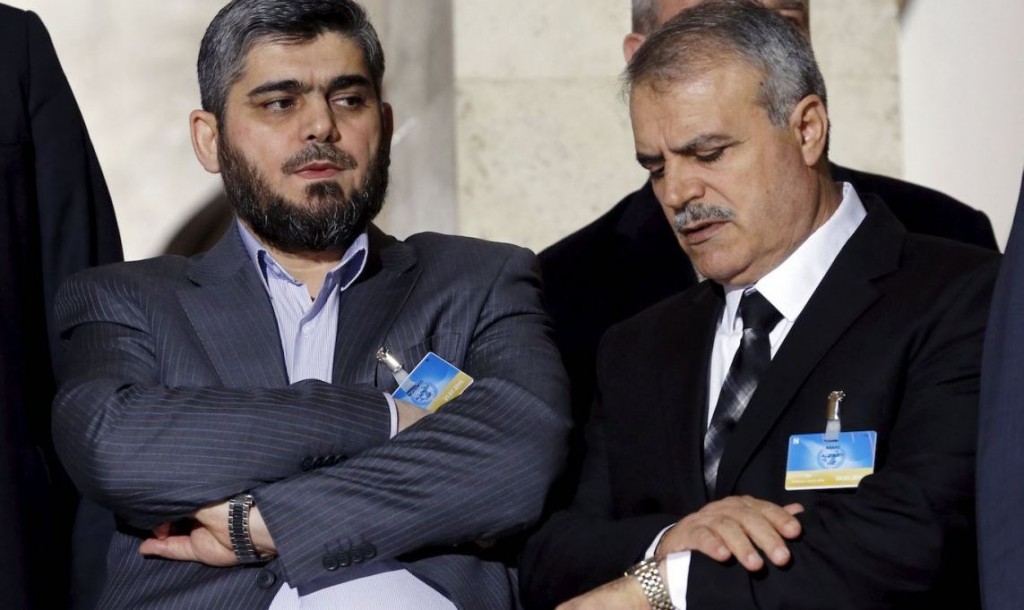

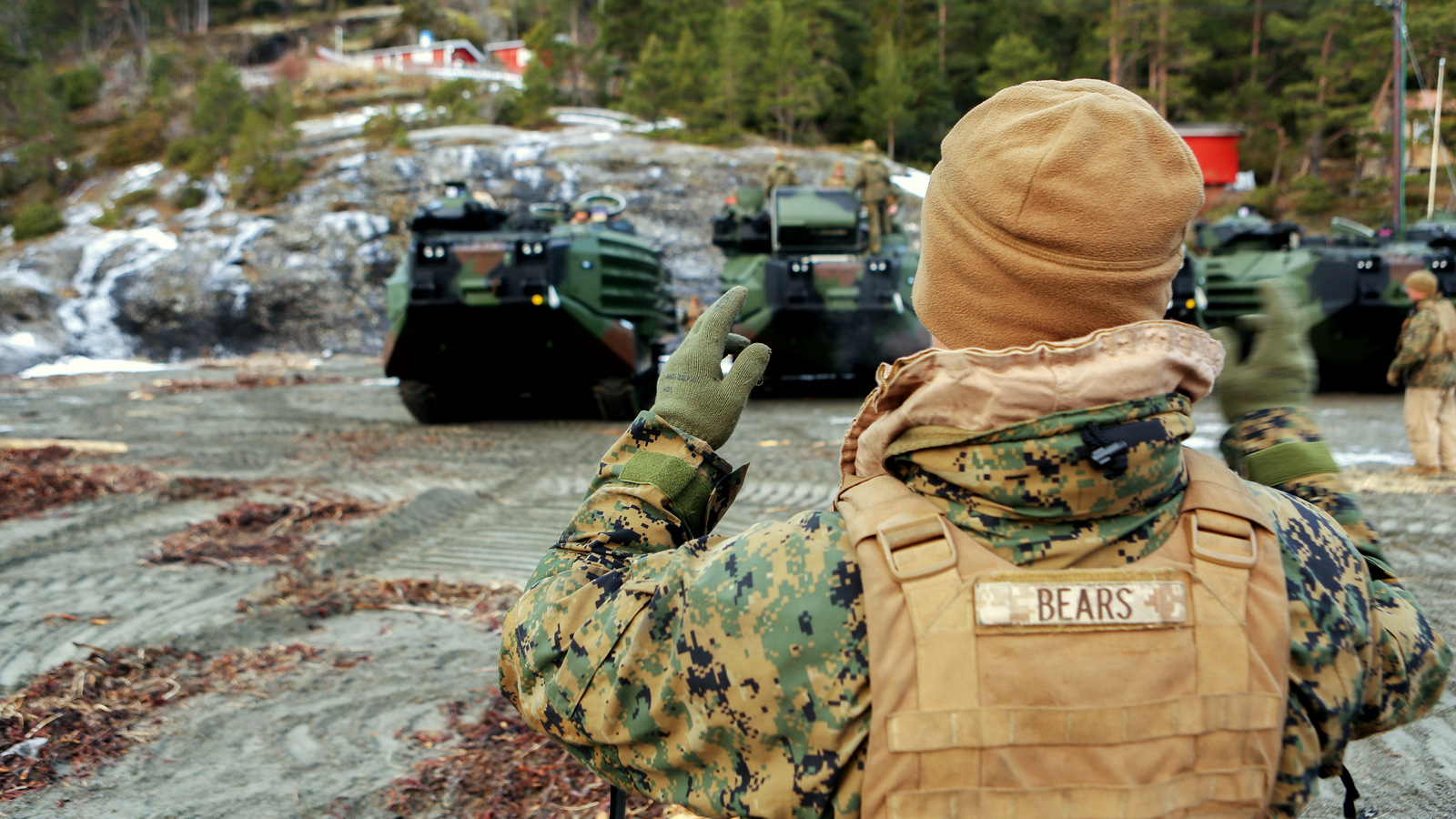
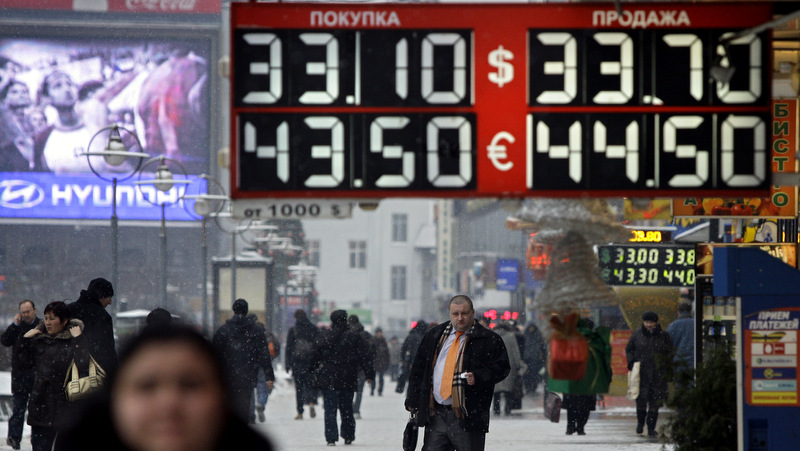
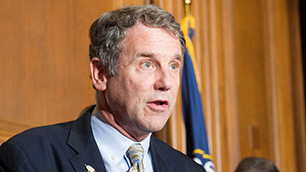

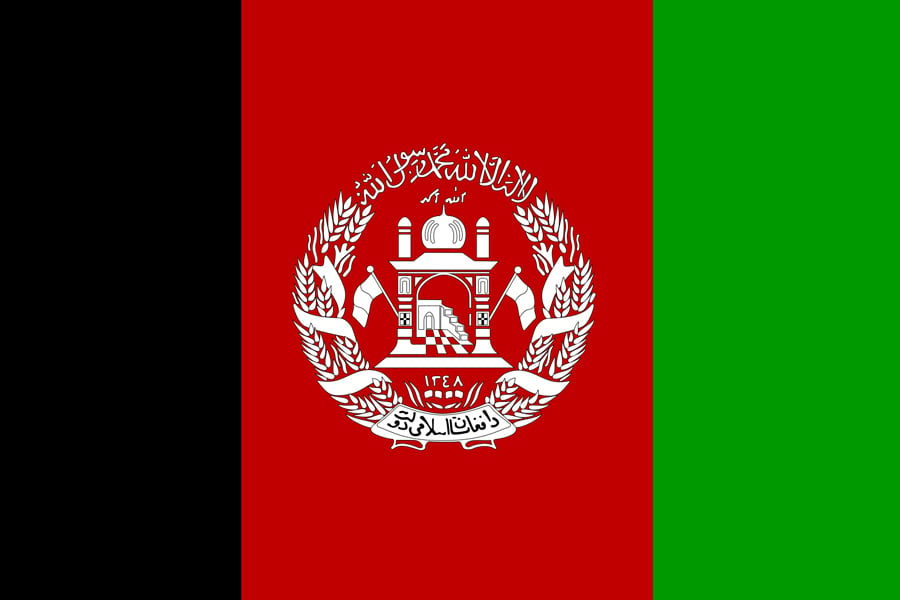


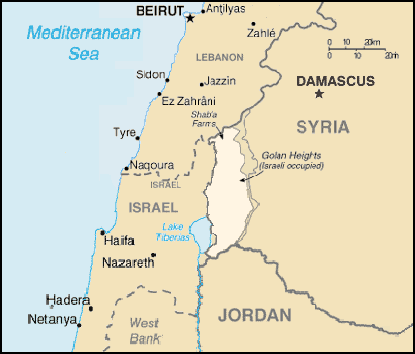







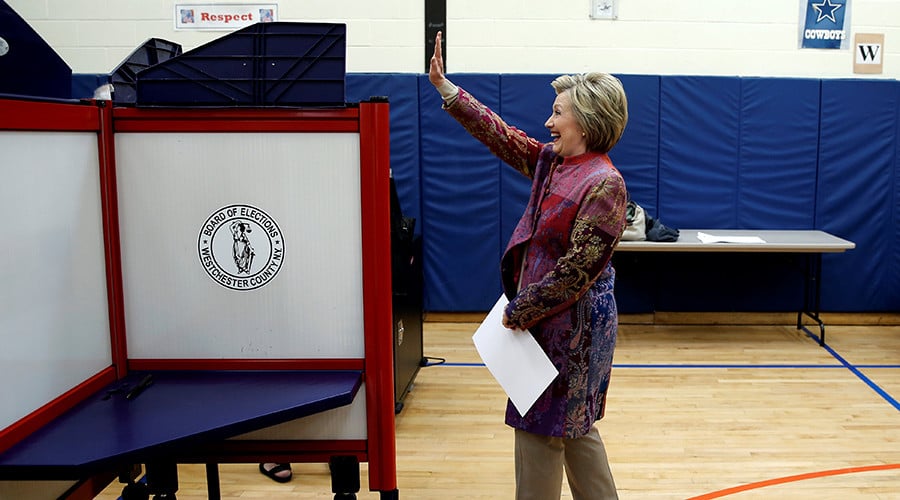
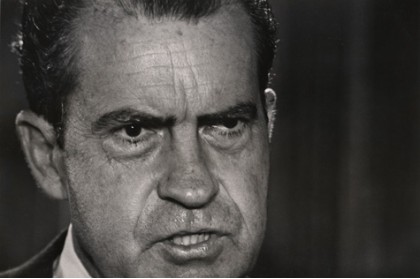
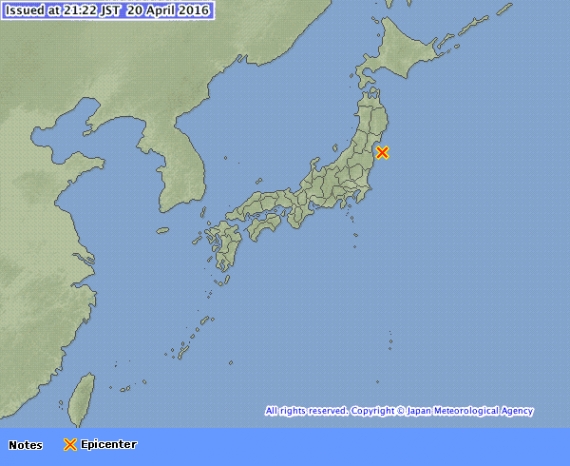

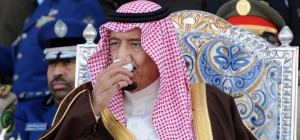

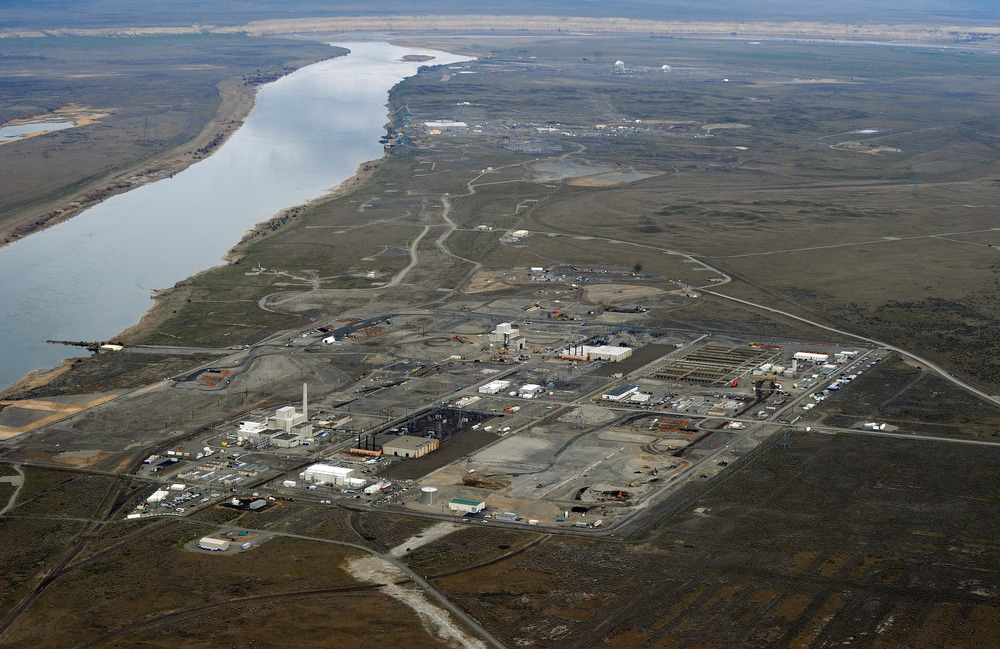
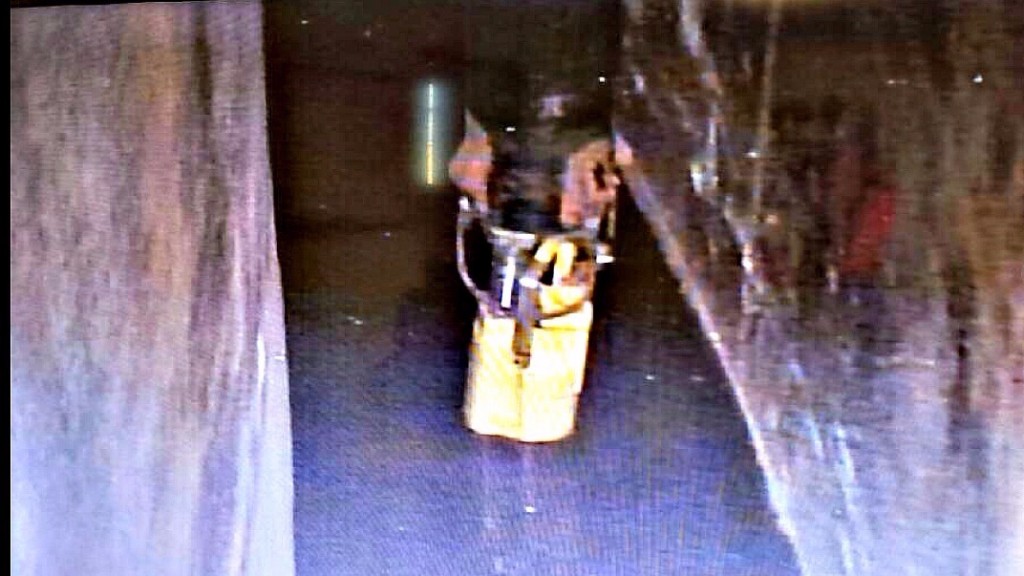
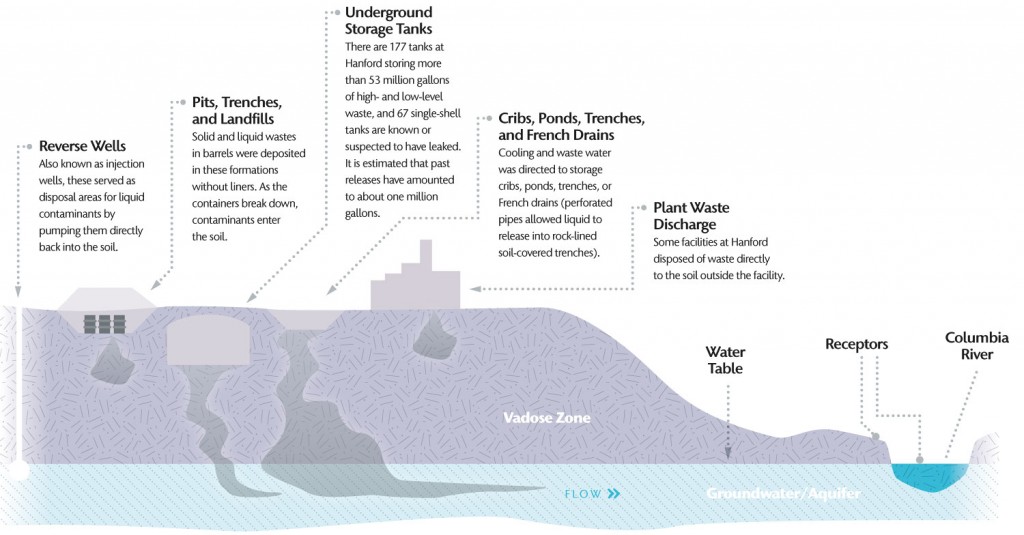
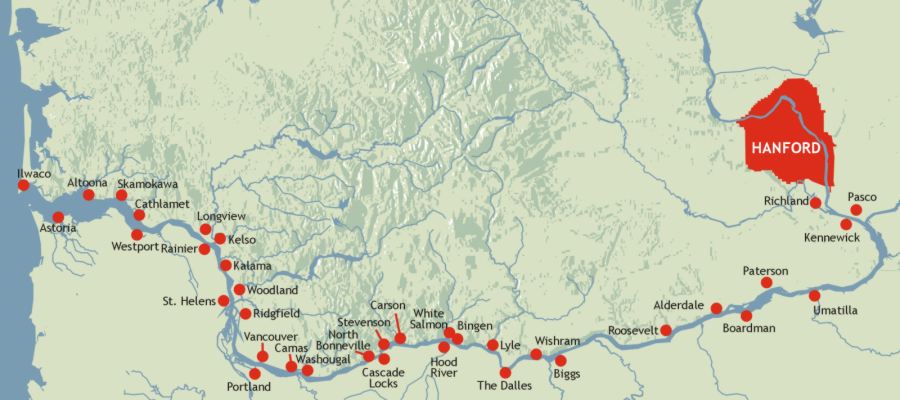











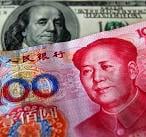

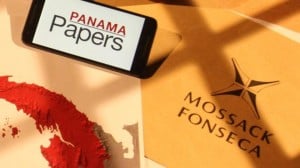


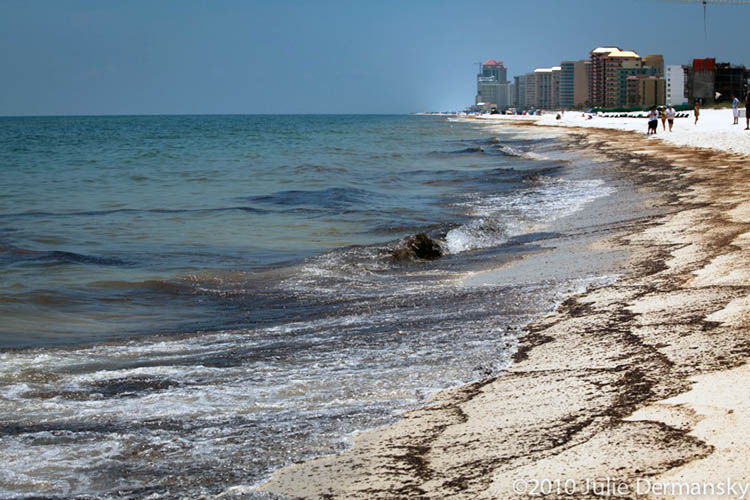
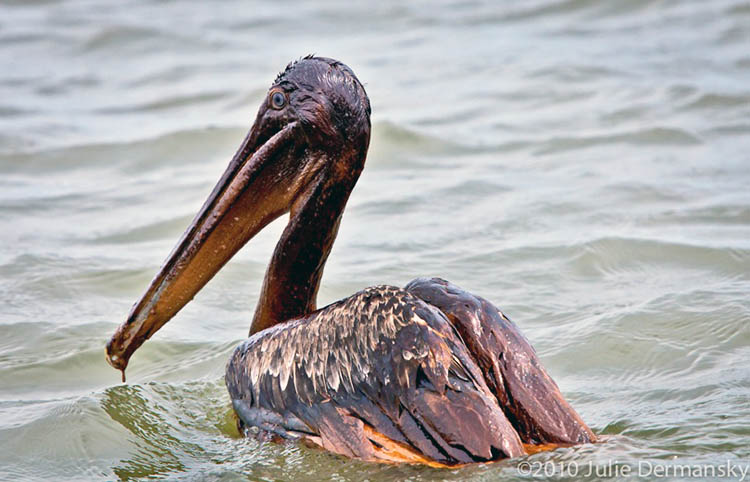
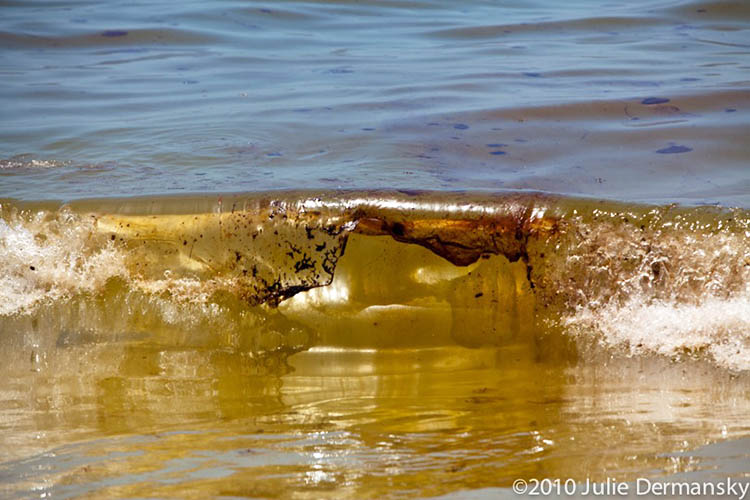
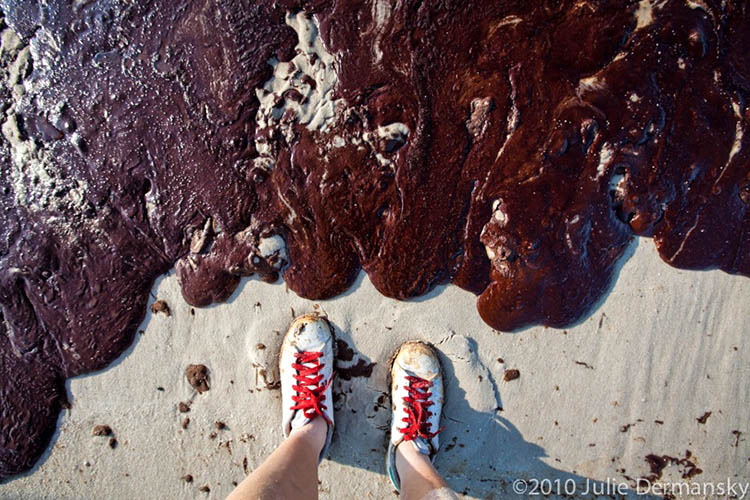
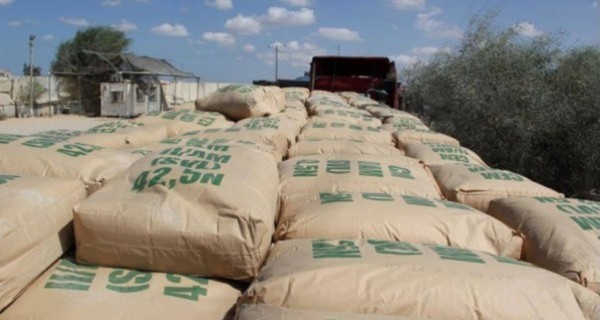


![epa04149938 Legislator Jair Bolsonaro, who supports the dictatorship, participates in a session held at Chamber of Legislators in Brasilia, Brazil, 01 April 2014. Brazilian Chamber of Legislators abruptly stoped the session in rejection of the 50 year anniversary of the military coup at the moment that Bolsonaro wanted to start his speech. Members of Parliament jeered at him and turned their backs in way of protest. EPA/FERNANDO BIZERRA JR. (Newscom TagID: epalive129917.jpg) [Photo via Newscom]](https://prod01-cdn07.cdn.firstlook.org/wp-uploads/sites/1/2016/04/Jair-Bolsonaro-540x360.jpg)


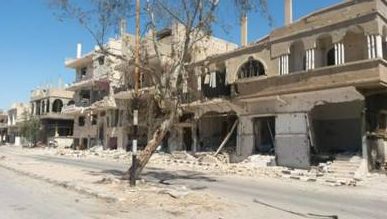
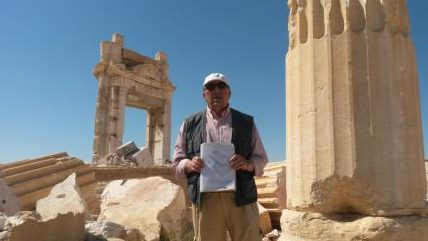


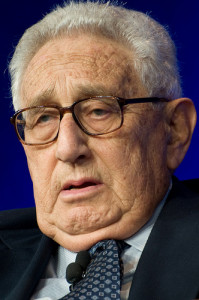
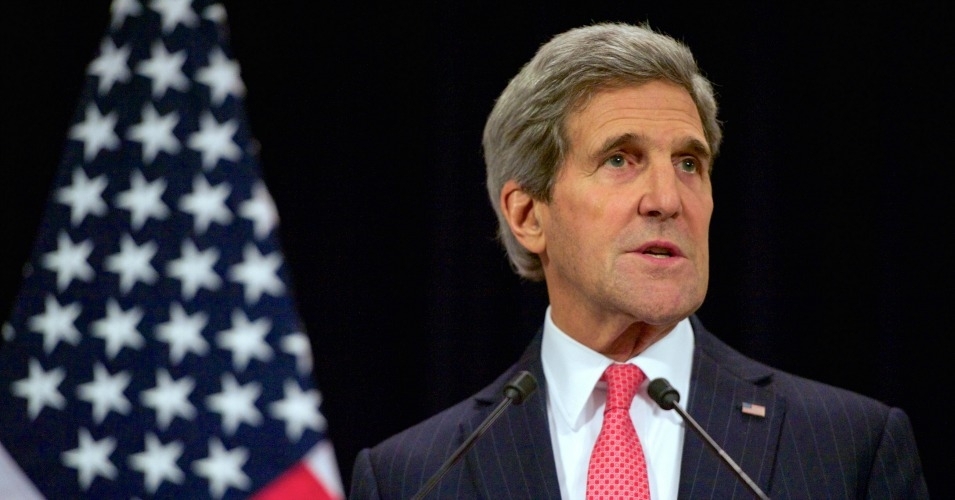
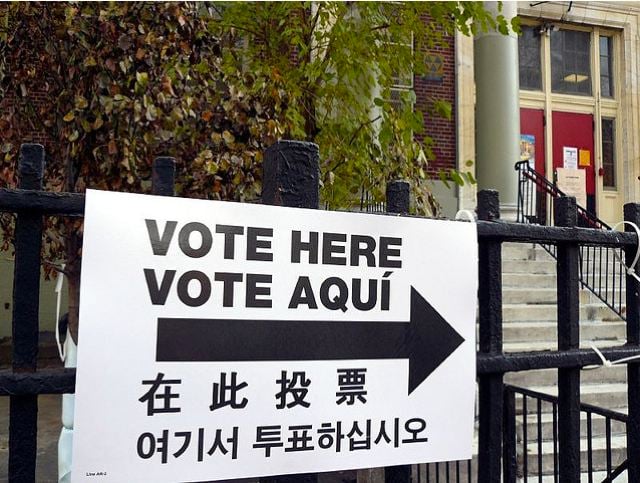
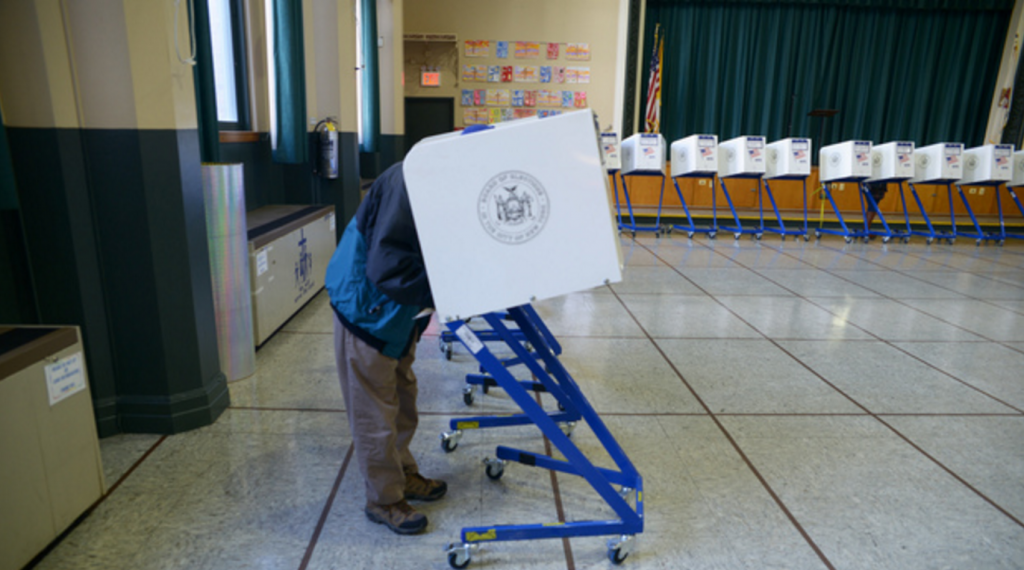
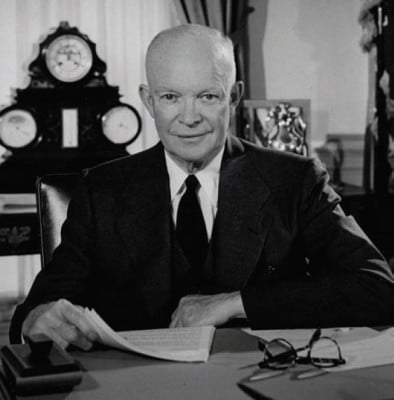



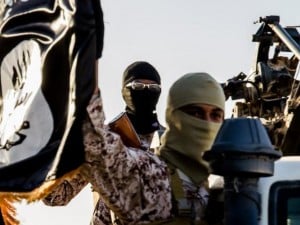



 Koide: It was truly a disastrous response. On the 11th I was in the laboratory in Kyoto as March was my month to work in the radiation-controlled area.3 It was normal workday hours and various tasks kept me busy working within the controlled area. Of course there is no TV or anything like that in the work space. That night there was a meeting so I came out to attend and that’s when I saw the images of the Sendai airport being swept away by the tsunami. The report said that there had been a devastating earthquake and tsunami. Then I wondered about the safety of the nuclear plants.
Koide: It was truly a disastrous response. On the 11th I was in the laboratory in Kyoto as March was my month to work in the radiation-controlled area.3 It was normal workday hours and various tasks kept me busy working within the controlled area. Of course there is no TV or anything like that in the work space. That night there was a meeting so I came out to attend and that’s when I saw the images of the Sendai airport being swept away by the tsunami. The report said that there had been a devastating earthquake and tsunami. Then I wondered about the safety of the nuclear plants.




































